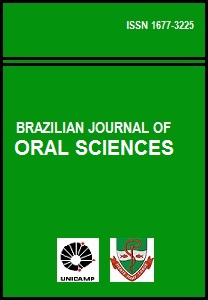Abstract
Impression taking is a critical step in the process of producing successful crowns and fixed partial dentures in oral rehabilitation, and the impression material is an important factor related to clinical success. Aim: The aim of this in vitro study was to assess and compare the dimensional accuracy of stone casts made from a monophase technique using 10 elastomeric impression materials. Methods: First, a stainless steel model with reference points in the teeth 33, 43, 37, and 47 was used to obtain the impressions. The distances were measured among teeth 33-43, 37-47, 33-37, and 43-47. For the impression technique, acrylic resin trays were made with an internal relief of approximately 2 mm. Specific adhesives for each material were used in the custom trays. Tray detachment movement was standardized by pneumatic equipment. After the impression procedures and obtaining of samples, the stone casts were observed in a measuring microscope at 30x magnification. Data recorded for each distance were analyzed statistically by one-way analysis of variance and Tukey’s test at 5% significance level. Results: Stone casts made with elastomeric impression materials showed statistically significant (p<0.05) differences when the dimensional accuracy values were compared. The order for the highest to lowest accuracy for the types of impression materials was as follws: polyvinylsiloxane (PVS), polyether, polysulfide and polydimethylsiloxane (PDMS). Conclusions: PVS were the most dimensionally accurate impression materials, and the PDMS showed the worst results of dimensional accuracy.The Brazilian Journal of Oral Sciences uses the Creative Commons license (CC), thus preserving the integrity of the articles in an open access environment.
Downloads
Download data is not yet available.

